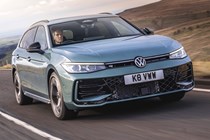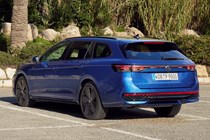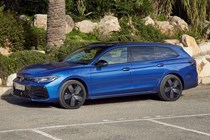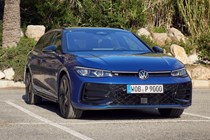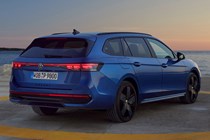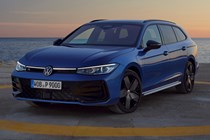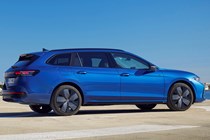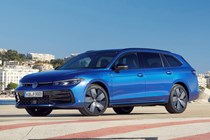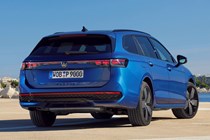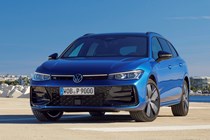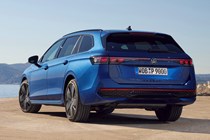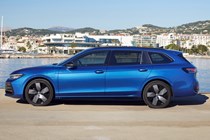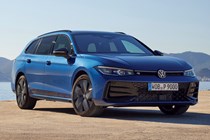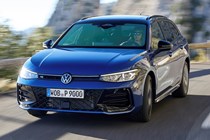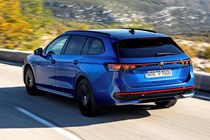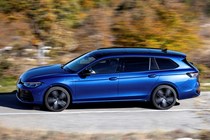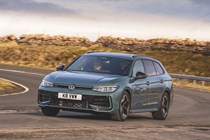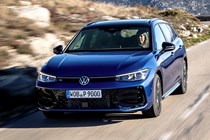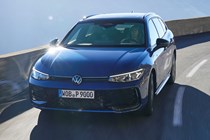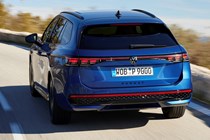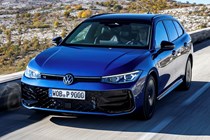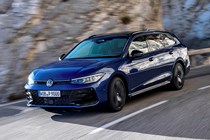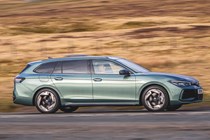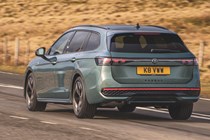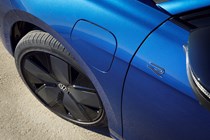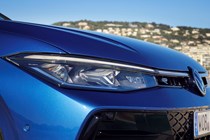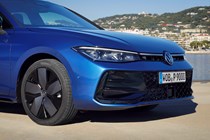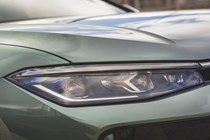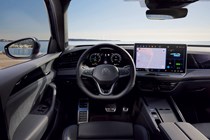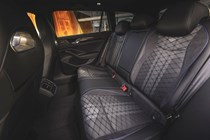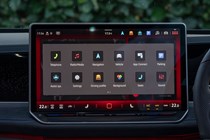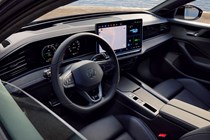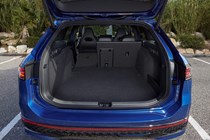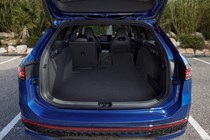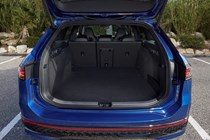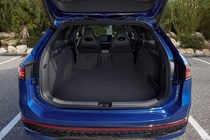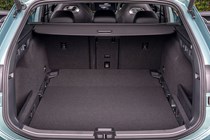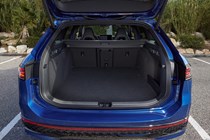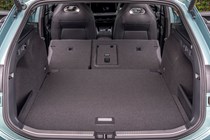
Volkswagen Passat engines, drive and performance
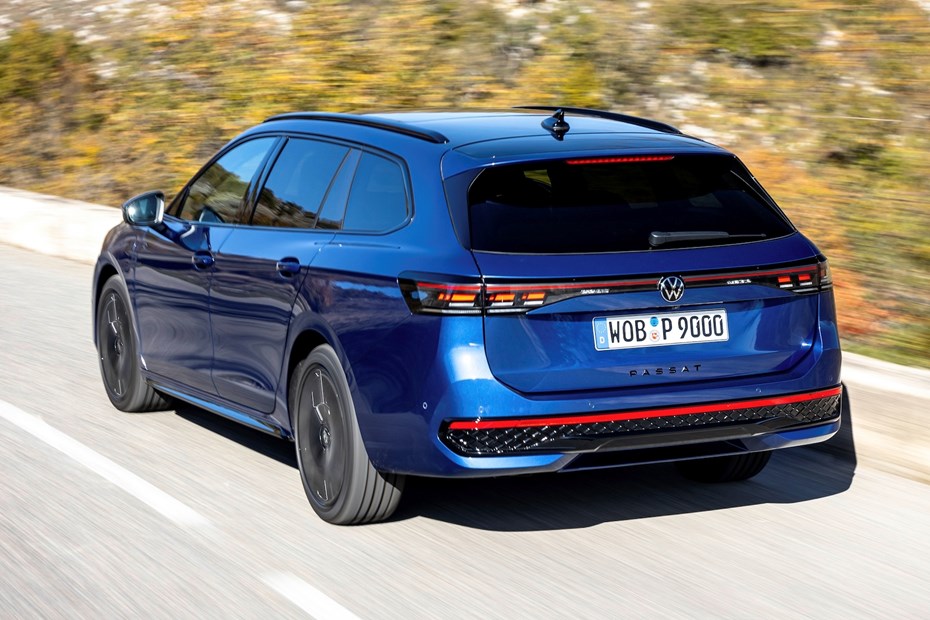
- No diesel – and that’s an oversight
- Entry-level 150hp petrol is a bit gutless
- But all engines are pretty efficient
Petrol engine
For whatever reason, Volkswagen decided to not offer UK buyers a diesel version of the new Passat. That’s a shame, because a mile-munching estate like this would really suit a torquey 2.0-litre diesel lump. What’s even more frustrating is that you can have a diesel in Germany – but we’ve been short changed.
Instead, we get an all-petrol line-up that kicks off with a 150hp version of Volkswagen’s familiar 1.5-litre four-cylinder mild hybrid engine. It’s teamed with a seven-speed automatic gearbox and, in a bid to entice former diesel owners, Volkswagen claims it’ll return upwards of 50mpg. We found that to be more like 40mpg in the real world – but we’ll cover that in greater detail on the next page.
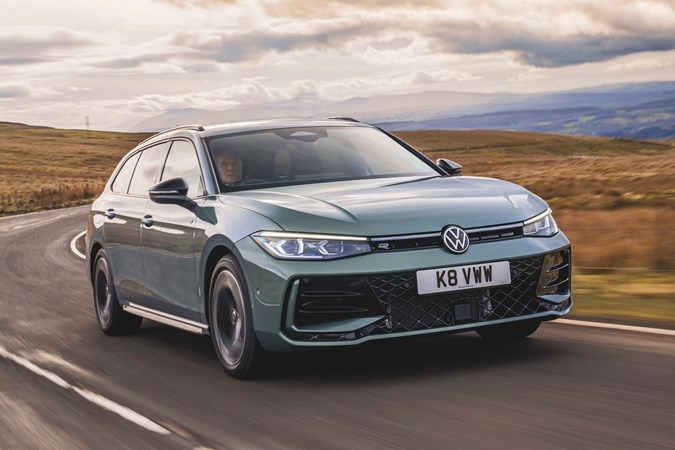
For now, all you need to know is that the 1.5-litre engine is a smooth and refined engine, but it does feel a little strained. Join a motorway slip road with vigour, and you’ll feel the automatic gearbox working hard to keep the engine in its power band.
Don’t get us wrong, the engine and gearbox combo can shift the Passat along nicely. It’ll do 0–62mph time of 9.2 seconds, which isn’t bad at all. But because the engine only has 250Nm of torque (compared to the 340Nm of torque you got in the cheapest diesel version of the previous generation Passat), you need to thrash the pants off it to find the best performance. That feels wrong in a comfortable motorway cruiser.
Plug-in hybrid powertrains
Those stepping out of a diesel will probably prefer the Passat PHEV. It’s changed a lot over the previous car, too. Volkswagen has junked its old 1.4-litre petrol engine and based its new plug-in hybrid powertrain around its more efficient 1.5-litre petrol engine.
The engine is teamed with a six-speed automatic gearbox, a beefy electric motor and a much larger 19.7kWh battery pack. That new battery is almost twice the size of the old Passat PHEV’s 10.6kWh unit – and Volkswagen claims it can cover up to 62 miles on electric power alone, which is more than enough for the average commute.
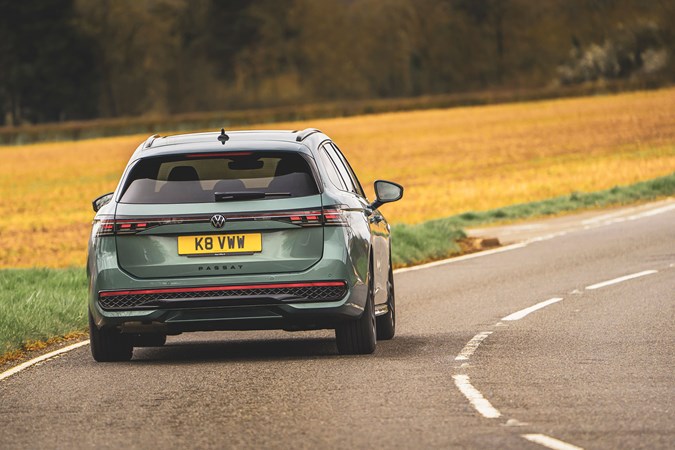
To try and further entice ex-diesel drivers, Volkswagen also says the Passat’s new PHEV system can cover up to 620 miles on a full battery and one tank of fuel.
Perhaps the most enticing prospect for choosing PHEV power is the extra performance. The system is available in a choice of two power outputs. The cheaper option serves up 204hp, while the flagship model has 272hp.
What’s it like to drive?
Volkswagen designed the Passat to be comfortable. It didn’t fall into the same trap as its competitor brands, as it only offers the car with sensibly sized alloys. Entry-level Life and mid-range Elegance cars feature 17-inch alloys, while the sporty R-Line model only sizes up by another inch.
That extra tyre thickness means the Passat doesn’t transmit as many vibrations or unwanted sounds into its cabin as a massive SUV riding on fashionable 20-inch alloys. The tyre sidewall has enough give to absorb the initial impact.
So far, we’ve only driven cars fitted with the latest generation of Volkswagen’s adaptive dampers, but we reckon they make a big difference to the way the Passat rides. They can independently assess how much damping force is required at each corner – and it does a good job of smoothing out most roads.
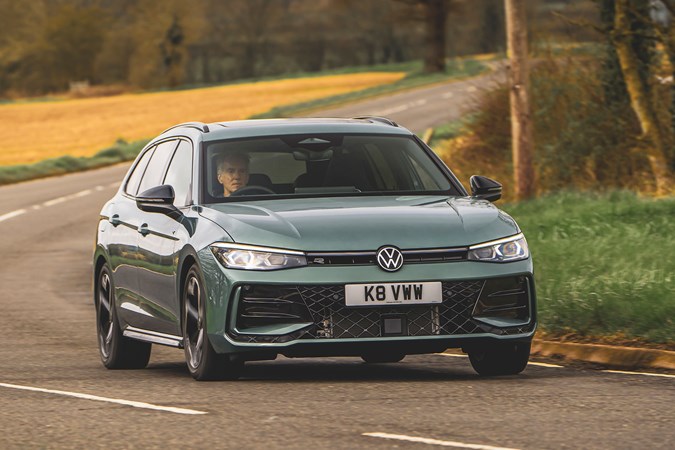
But, while this technology is certainly impressive, it isn’t perfect. It can become unsettled on motorway expansion joints and aggressive potholes. Thankfully, the chassis quickly gathers itself up and regains its composure, so it’s not a huge issue.
Another stand-out feature of the Passat is its refinement. Volkswagen says the car’s drag co-efficient is a mere 0.25Cd, which only just trails the ultra-slippery Porsche Taycan’s 0.22Cd score. The benefits of this are twofold.
Because the Passat cuts through the air so cleanly, it can eke more miles from a gallon of fuel. Plus, its cabin stays quiet because it doesn’t waste any energy on battering the air out of the way. It’s remarkably composed at motorway speeds – there’s far less wind noise than you get in a big family SUV such as the Kia Sorento or Skoda Kodiaq.
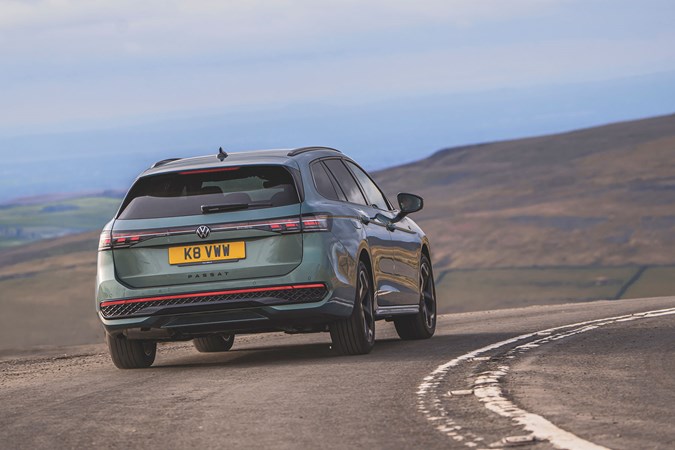
Despite being very obviously set up to chew through long motorway drives, the Passat is also surprisingly good on twisty roads. We can’t go as far as to call it fun, but its well-weighted and accurate steering, tight body control and strong brakes make this large estate much more engaging than we expected.
Its sheer size is a bit of a hinderance on narrow country lanes, but if you fancy going off-piste, the Passat won’t let you down. It offers plenty of grip and incredibly predictable handling. Our only gripe was the slightly dim-witted automatic gearbox.
In manual mode, it takes ages to swap between cogs, which can leave you wanting for more when you’re powering out of a corner. This behaviour is also quite unusual for a double-clutch transmission, but we suspect Volkswagen has loaded a less aggressive shifting strategy into the ‘box’s computer to better suit the Passat’s laid back nature.


